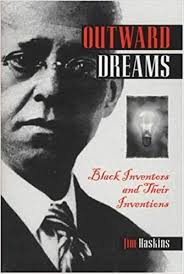Jim Haskins: African America’s Biographer
Listen to the Recess! Clip
| Author | John Cech |
| Air Date | 10/26/2005 |

Jim Haskins: African America’s Biographer Transcript
Jim Haskins passed away this summer. He was very well-known as a writer of biographies and other works of non-fiction for children, young people, and adults, and he was my friend and colleague in the English Department at the University of Florida for over a quarter of a century. Jim was amazingly prolific — he was well on his way to publishing his second hundred books. He has been called “the unofficial biographer of Black America,” an acknowledgement of the major concern of his work, that of chronicling the lives of African Americans in books about such figures as: Rosa Parks, Martin Luther King, Jr., Thurgood Marshall, Barbara Jordan, Mohammed Ali, Bricktop, Magic Johnson, Katherine Dunham, Bill Cosby, Dinah Washington, Scott Joplin, Mabel Mercer, Spike Lee, Langston Hughes — to name just a few. Jim wrote extensively about the Civil Rights Movement, in which he was active during the 1960s and 70s, and its leaders, many of whom he knew personally. He wrote about African American music, dance, language, folklore, scientists, jurists, clergy, and inventors. He wrote about the Harlem Renaissance and the pioneering African American photographer, James Van Derzee. He wrote about African American pilots, like Bessie Coleman and Eugene Bullard, and African American enterpreneurs, like Madame C. J. Walker and Barry Gordy. Perhaps he is best known for the book that he wrote about the famous Harlem nightspot, The Cotton Club, which was published in 1977, and that provided the background for the movie of the same name. Incredibly, before Jim began his research on this book, virtually nothing had been written about the locus of creative energy, where most of the great African American jazz musicians had performed in the 1930s. Jim wrote collections of African American ghost stories, and books about African American magicians, explorers, cowboys, and military heroes, among them Crispus Attucks, who was killed during the Boston Massacre of 1770, becoming the first casualty in America’s war of independence. One could go on and on.
In fact, Jim told me that he was always working on three books at the same time — one here in Gainesville, where he lived and taught, one in New York, where he also lived, and one to work on on the plane while he was commuting between these two places. Always impeccably dressed in a jacket and tie, even in the intense heat of the Florida summer, Jim was always the epitome of cool — at home in Paris or New York or Demopolis, Alabama, where he was born sixty-three years ago and could not enter its library as a child because of segregation. When I asked Jim once what he thought about this, he replied, philosophically, with a phrase that I often heard him use. It was, in a sense, his motto for life, “We learn as we go. . . .We learn as we go.”